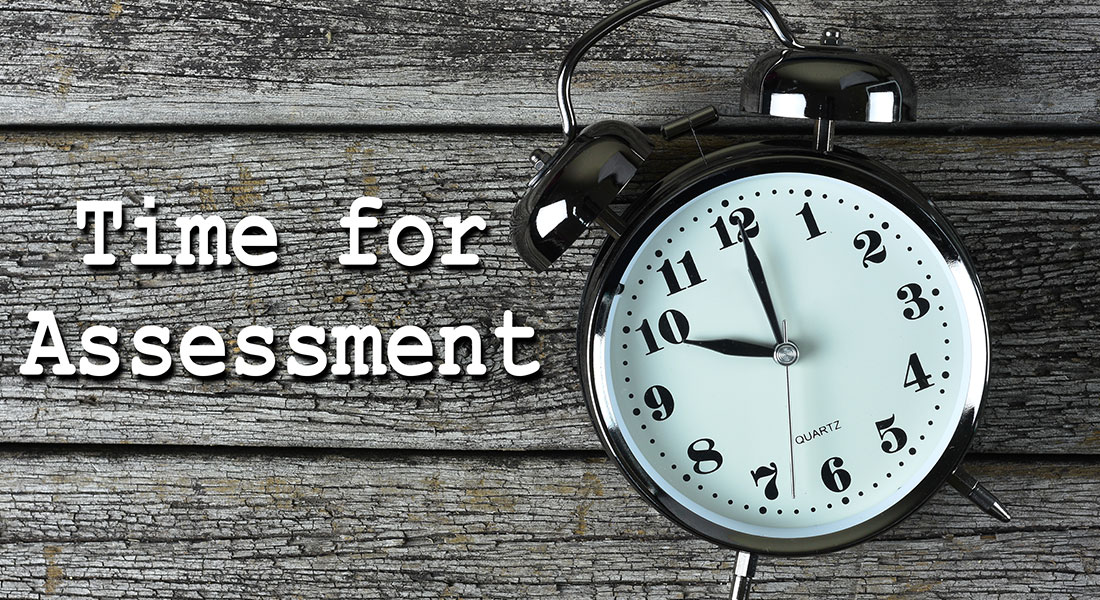Do You Need to Plan for eLearning Assessments? Why? How?

Planning my eLearning assessments? Whatever for? I just sit at my system for a couple of hours (at the most!) and finish my eLearning assessments in one go! I’m sure most of you must be thinking these thoughts, am I right?
But the fact is, effective eLearning assessments can be a real challenge to design and develop. We are often unsure about how and what to incorporate in assessments, and have too little time to develop them.
However, assessments play a vital role in tracking learners’ performance and identifying their strengths and weaknesses. eLearning assessments also provide a vast spectrum of possibilities for engagement and interaction. The problem arises when assessments are not up to the mark and end up:
- Testing wrong things
- Failing to meet stakeholder requirements
- Becoming a test of reading ability
Coming up with effective evaluation strategies and implementing a learner-centered approach are a little difficult, to say the least. However, with some planning, careful alignment with your learning objectives and content along with well-constructed questions and activities, you can significantly increase learning and retention. And more effective learning accelerates both proficiency and performance!
4 Steps to Plan Your eLearning Assessments
- Confirm Stakeholder Requirements
- Verify Learning Objectives
- Select Optimal Assessment Type(s)
- Identify Assessment Constraints
Investing a little time right in the beginning to plan your eLearning assessments will streamline your development process and increase the effectiveness of your assessments. You’ll save time and money, and also ensure you meet your stakeholders’ requirements.
Explore how to design eLearning assessments that maximize learning impact.
So, here goes – the 4 steps to plan your eLearning assessments.
Four Steps to Plan Your eLearning Assessments
1. Confirm Your Stakeholder Requirements
Stakeholders have a big say in setting up priorities and objectives in eLearning design and development, so it is necessary to confirm their requirements before going ahead.
Here’s a list of questions you can ask to do that:
- Is it mandatory for everyone in the target audience to take the assessments?
- How many attempts should be allowed per question or activity?
- What happens when a learner fails to get a ‘passing’ score?
- How and when will they receive feedback (immediately or at the end)?
- Will the results be tracked and reported? To whom and how?
2. Verify the Objectives
Learning objectives form the basis for your entire eLearning program. So, it is important that they are well constructed – the performance, condition, and criteria must be clear for each objective to be assessed. A basic mistake that course designers are often guilty of is creating test items that do not match the learning objectives.
Verify the objectives and check with SMEs that everything is covered. Here are some questions you can ask stakeholders to verify the objectives:
- What should the learner be able to do after the completion of course? For example, should the learner just “explain” how to log in to a system…or actually “log in” to the system?
- What are the conditions under which the performance is suppose to occur?
- What is the acceptable performance or how well must the learner perform to ‘pass’?
3. Select Optimal Assessment Type(s) Based on the Objectives
Here are some basic types of assessments you can use in eLearning:
- Knowledge-based – examples include questions in the form of true/false, fill in the blanks, rank order/sequence, matching, multiple choice questions
- Essay – where participants need to write a short answer or discuss whatever they learned
- Performance-based – that require participants to do something (perform a task) through simulations, scenarios, role-plays, and case studies
Remember, not all assessment types are suitable for every objective. So, how do you select the best assessment type/s for your course?
You need to consider two important factors:
- The nature of the objectives to be assessed – required performance, conditions, and criteria
- The strengths and weaknesses of each type of assessment
Sometimes, a combination of assessment types may be needed – a multiple choice or matching assessment for the ‘simpler’ knowledge-based objectives and a performance-based assessment for the more complex objectives that require the learner to ‘do’ something.
Use the strongest type of assessment to assess the desired performance, keeping in mind the conditions and criteria. For instance, if we go back to our example of logging in to a computer system, a multiple-choice assessment might check the learners’ ability to identify the correct procedure, but a simulation would be needed to determine if they could actually log in (their performance).
4. Identify Constraints that can Influence the Design and Implementation of Your Assessment
The fourth and final planning step needs you to identify any constraints that might affect the design, development, or implementation of the assessment.
A few important design/development constraints include the lack of time and resources to develop the assessment.
Implementation constraints may include:
- The time available to take the assessment
- A system for administration or tracking
- Types of questions that are feasible in the available administration system
After planning your assessments, it’s time to actually write your assessments. Look out for the next blog on ‘Six Steps for Writing Perfect Assessments’.
To Sum Up
Well-planned and effective eLearning assessments satisfy both – learners and training managers. Effective stakeholder engagement and involvement will ensure clarity of objectives and priorities, and that your training program becomes a success.
Now that you have a step-by-step plan for designing assessments, take a look at some more proven hacks to get eLearning implementation right!


![4 Types of Microlearning Assessments and their Benefits [Infographic] 4 Types of Microlearning Assessments and their Benefits [Infographic]](https://blog.commlabindia.com/hs-fs/hubfs/Imported_Blog_Media/microlearning-assessments-formats-benefits-infographic-1.png?width=900&height=3312&name=microlearning-assessments-formats-benefits-infographic-1.png)

![Plan Your eLearning Assessments Like a Pro! [SlideShare]](https://blog.commlabindia.com/hubfs/Imported_Blog_Media/elearning-assessments-plan-slideshare.jpg)

